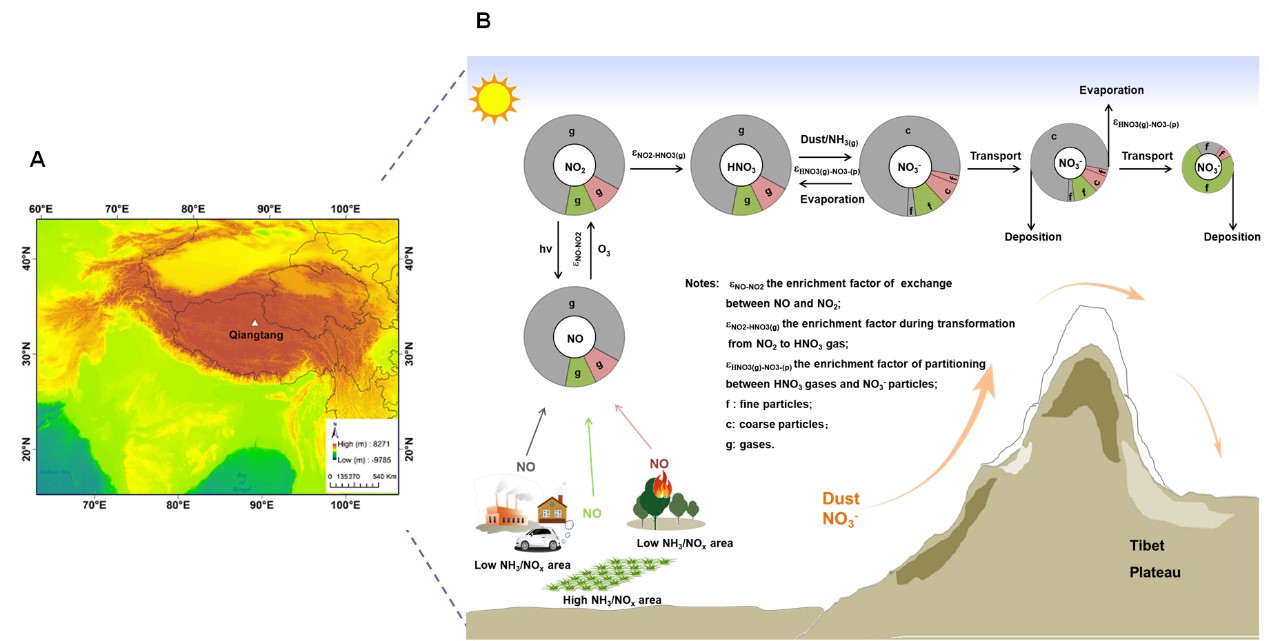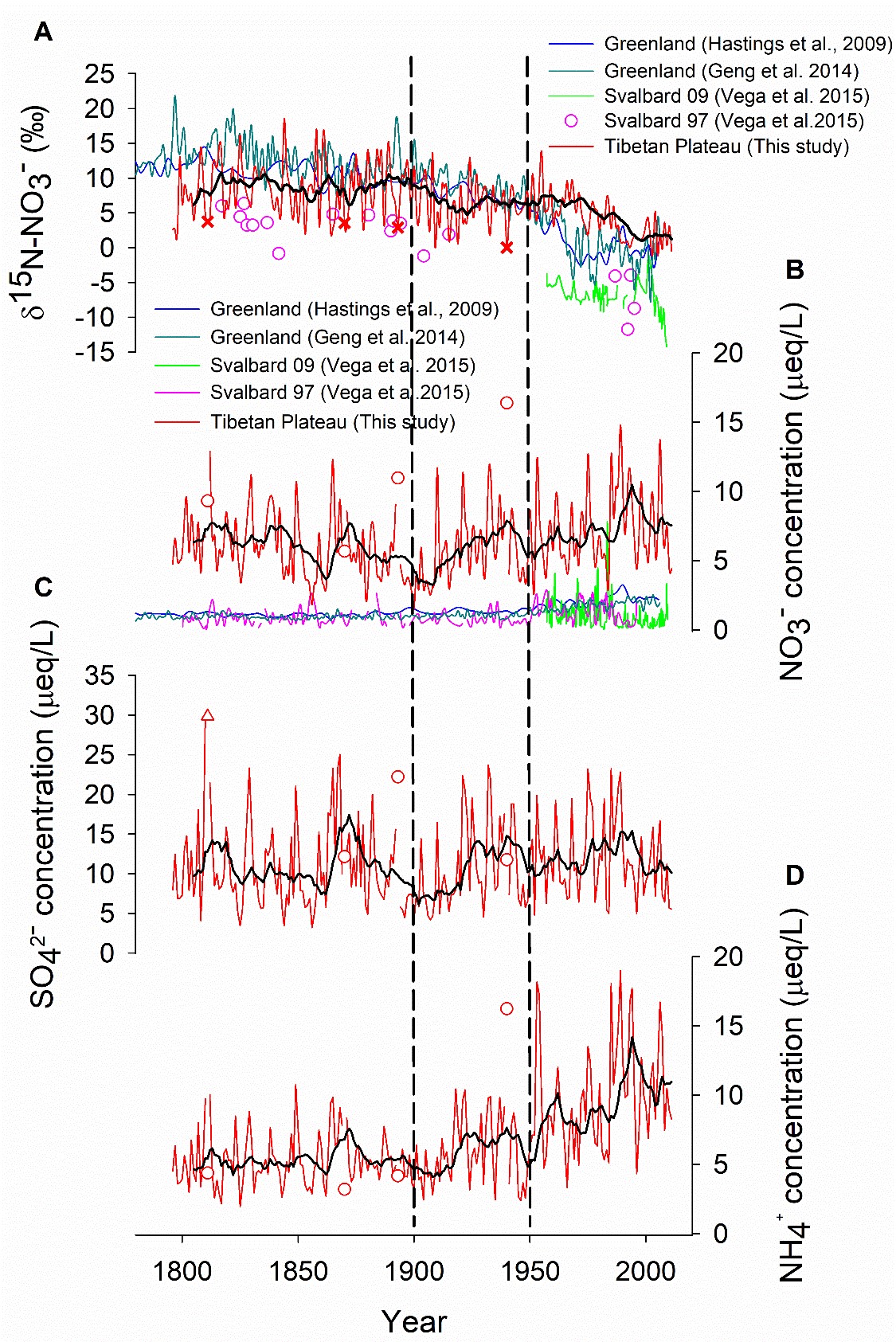Agriculture and Climate Variability Drive Nitrogen Deposition to the Tibetan Plateau over the Last 200 Years
Human activities have significantly changed the environment and climate in the world since the industrial revolution. Nitrogen fixation induced by human activities has considerably altered the nitrogen cycling process on the Earth.
Therefore, quantifying the historical change of atmospheric nitrogen deposition and identifying the driving forces are crucial to evaluate and predict the nitrogen cycle in terrestrial and marine ecosystems. Ice core is a faithful recorder of long-time scale atmospheric nitrate (NO3-) deposition, and nitrogen stable isotopic measurements can help identify the factors affecting the historical change of nitrogen deposition. The nitrogen stable isotope composition (δ15N) in previous Arctic ice core NO3- has shown a significant decrease since the 1850s while NO3- concentration shown a significant increase, revealing a definite effect from anthropogenic activities.
However, controversy still exists in the mechanisms of how anthropogenic activities affect the change of δ15N in atmospheric NO3-.
To further improve our understanding of historical changes in nitrate deposition, Prof. FANG Yunting’s group from the Institute of Applied Ecology (IAE), the Chinese Academy of Sciences (CAS), Prof. TIAN Lide’s group from the Institute of Tibetan Plateau Research (ITP), the Chinese Academy of Sciences (CAS) and Prof. Meredith G. HASTINGS’s group from Brown University collaborated to first explore the atmospheric nitrogen deposition and isotope characteristics over the last 200 years in a Tibetan Plateau ice core.
The researchers, in their paper, reported that the NO3- concentration in Tibetan Plateau ice core increased significantly from pre-1900 to post-1950. In addition, during the same period, the mean value and interannual variability of δ15N-NO3- also decrease significantly. Another interesting finding in this study is that a significant coherence was revealed between δ15N-NO3- and El Ni?o-Southern Oscillation. With the new multi-factor model promoted in this study, the researchers concluded that the decrease of δ15N-NO3- after 1950 in the central Tibetan Plateau ice core is driven by increased NO emission from anthropogenic fertilizer use in Asian countries. Before 1950, the influence of natural climate variability is essential in determining the δ15N-NO3-, whereas anthropogenic emissions mute the climate signals in the modern era. This study provides insights into historical trajectory of Asian terrestrial N cycling and its response to human activities.
The research was financially supported by the National Key R&D Program of China, the Key Research Program of Frontier Sciences of Chinese Academy of Sciences, the National Natural Science Foundation, National Research Program for Key Issues in Air Pollution Control and so on.
The study entitled “Isotopic evidence that recent agriculture overprints climate variability in nitrogen deposition to the Tibetan Plateau”, has been published in Environment International.

Figure 1. Schematic of the controls on δ15N of ice core nitrate. (A) The ice core sampling site on the Tibetan Plateau (white triangle). (B) NOx emission sources (bottom left), followed by isotope effects during nitrate formation and transportation processes (Image by LI Zhengjie).

Figure 2. Changes in δ15N-NO3- (A), concentration of NO3- (B) in Tibetan Plateau and Arctic ice, and concentrations of SO42- (C) and NH4+ (D) in the Tibetan Plateau ice core (Image by LI Zhengjie).
Email: yueqian@iae.ac.cn
Publication Name: LI Zhengjie et al.



